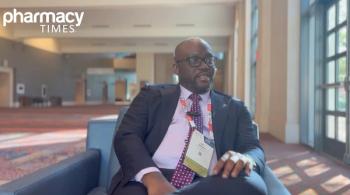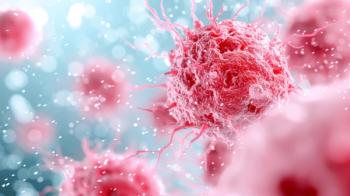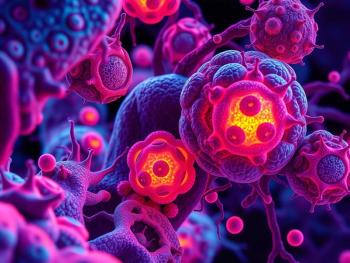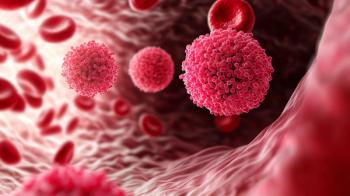
- September 2014 Oncology
- Volume 80
- Issue 9
Breast Cancer Surprises: A Pharmacist's Personal Experience
Regina, a licensed pharmacist for more than 20 years, developed breast cancer at 48 years of age.
Regina, a licensed pharmacist for more than 20 years, developed breast cancer at 48 years of age.
Across the nation, newly licensed pharmacists are beginning their professional careers. Armed with the latest medical information, they have learned in traditional ways (in classrooms and clinical settings) and in nontraditional ways (from the media, fiction, and television).1-3 Most graduated without learning in the most informative way: through personal experience.4 As life progresses and we experience infection, illness, disease, or disaster personally or vicariously, our knowledge broadens. This article discusses one pharmacist’s surprises and personal experience with breast cancer.
Surprise #1: You Don’t Know What You Don’t Know
Regina, a licensed pharmacist for more than 20 years, developed breast cancer 18 months ago at 48 years of age. Regina’s primary practice was oncology; she dispensed chemotherapy and worked in cancer clinical trials for years. She knew the science of cancer and kept up with new developments. Although she had 3 risk factors (ie, female gender, dense breasts, and a benign breast condition; Online Table) and several biopsies of suspicious lesions over a period of years that produced negative results, the diagnosis was a surprise. The real surprise, however, was the gaps in her knowledge.
Table 1: Breast Cancer Risk Factors
Risk Factor
Note
Female Gender
- Breast cancer is 100× more common in women than in men.
Age
- Women 45 years or younger account for approximately 1 in 8 invasive breast cancers.
- Women 55 years or older account for approximately 2 of 3 invasive breast cancers.
Genetics
- 5% to 10% of breast cancers are hereditary.
- The most common mutations are BRCA1 and BRCA2.
Family History
- Having a first-degree relative (mother, sister, or daughter) with breast cancer approximately doubles a patient’s risk.
- Having 2 first-degree relatives increases risk about 3-fold.
Personal History
- Women who have had cancer in 1 breast have a 3- to 4-fold increased risk of developing a new primary cancer in the other breast or in another part of the same breast.
Race and Ethnicity
- White women are slightly more likely to develop breast cancer, but African-American women are more likely to die of breast cancer.
Dense Breast Tissue
- Women with dense breasts have an elevated risk.
- Dense breast tissue can decrease mammogram accuracy.
Benign Breast Conditions
- Proliferative lesions with or without atypia increase risk.
Adapted from references 5 and 6.
Regina did extensive research to answer many of her own questions. Once she and her oncologists determined that a double mastectomy was her best option, she knew that she wouldn’t need radiation therapy on either breast. However, she wouldn’t know whether chemotherapy would be needed until after surgeons determined whether there was lymph node involvement (there was not). She also had to wait 3 weeks after surgery for results of postmastectomy testing (eg, Oncotype DX, MammaPrint7,8) on her tumor cells to determine whether she has a genetic predisposition.
Regina knew little about reconstructive surgery. Many surgical options (prosthetic implants and autologous tissue9) were available, so she went “back to the books.” She chose silicone, and her plastic surgeon loaned her a textbook10 that explained precisely how her breast reconstruction would be done.
Surprise #2: Waiting
The diagnosis began a series of hurry-up-and-wait activities, which created an emotional roller coaster as Regina received good news (the small tumor size seen via magnetic resonance imaging was suggestive of stage 1; Regina tested negative for BRCA1 and BRCA2) and bad news (her ductal carcinoma in situ had already progressed to an invasive cancer; multiple suspected lesions indicated the need for a right breast mastectomy).
For years, Regina had told others who asked for advice about their cancers that it is difficult to advise others with incomplete information. During her ordeal, she realized that gathering adequate clinical information takes weeks. Tests and radiographs needed to be obtained and sometimes repeated. Regina read the pathologist’s report, but more definitive information (eg, exact tumor size and margins, lymph node involvement) was needed to determine the disease stage.
Regina sought advice from women who had navigated treatment successfully. A friend suggested she maintain a notebook for copies of doctors’ notes, laboratory tests, and radiology reports. Bringing her notebook to every visit educated her medical oncologist, surgeon, radiation oncologist, plastic surgeon, regular physician, and endocrinologist (who followed a benign thyroid growth), and saved her from having tests repeated unnecessarily.
Surprise #3: Time Is Relative
Regina knew from her years in the clinic, surgery to remove a malignant breast tumor isn’t usually an emergency. Ordinarily, surgery is performed within 3 months of diagnosis, and for Regina the pharmacist, 3 months seemed reasonable and had always passed quickly. For Regina the patient, waiting 3 months seemed endless. She says, “I just wanted it [the cancer] out.”
Surprise #4: Pharmaceuticals
Before cancer, Regina’s drug regimen included a proton-pump inhibitor and a lipid-lowering agent. After her cancer diagnosis, she took numerous preoperative drugs before her 3 surgeries for her bilateral mastectomy and reconstruction. After each, she needed antiemetics, opioid analgesics, stool softeners, laxatives, and antibiotics. Additionally, breast reconstruction causes severe muscle spasm, so she took diazepam as needed. Sometimes, the drugs could be mind-numbing.
Two experiences with the drugs were noteworthy. Regina had taken sulfa drugs several times before, but she developed a sulfa allergy (the traditional itchy rash) after taking cotrimoxazole. A pleasant surprise was that her surgeon who prescribed the sulfa drugs allowed and encouraged her to text him with questions or concerns, and he replied immediately. (She also texted a picture of an incision one day when she thought she may have had an infection, which avoided an office visit.)
Next, she started taking tamoxifen, as recommended by the National Comprehensive Cancer Center Practice Guidelines for Breast Cancer to reduce the risk of recurrence in premenopausal women.11 Another surprise was the poor quality of Internet information concerning tamoxifen; there was a great deal of incomplete or erroneous information. Regina experienced known adverse reactions (eg, significant mood swings, mild vasomotor symptoms). Because her mood swings were so severe, she decided, against the advice of her oncologist, to stop taking tamoxifen. At her next doctor’s visit, her oncologist tested her CYP2D6 metabolism genotype.12 She is an ultrarapid metabolizer, which may account for her increased side effects.13 She resumed taking tamoxifen on an every-other-day schedule, and eventually went back to a daily dose. She admits that her adherence is poor, and she misses 1 or 2 days every week. She acknowledges that her previous experience with side effects is a factor even though they are tolerable now.
Surprise #5: Difficult Ambulatory Pharmacy Visits
Regina had used 1 ambulatory pharmacy for years; however, when a new pharmacy opened closer to home, she transferred her prescriptions for convenience. She didn’t identify herself as a pharmacist, as she didn’t want the staff to feel pressure or give her special treatment. Special treatment would have been welcome, however, on postoperative occasions when she was visibly woozy and uncomfortable due to drain tubes and expanders. The pharmacy staff seemed oblivious and gave no one—neither the elderly nor the visibly ill—any kind of priority.
Regina’s transferred prescriptions were plagued with small problems. One pharmacist dispensed a 30-day supply of maintenance medication. When Regina told her that she always receives a 90-day supply with the related 3-month co-payment, the pharmacist said that the physician designated a 30-day supply, which was simply not true. Regina had to hand deliver a new prescription from her physician to the pharmacist for a 90-day supply. In addition, her prescribers’ names were scrambled on her prescriptions, with her oncologists’ names on her medical prescriptions and vice versa. This small problem would have been a significant issue when it was time to call for refills, so she had to work with the staff to correct it.
Surprise #6: Angelina Jolie’s Announcement
Angelina Jolie never had breast cancer, but tested positive for the BRCA gene. She opted for a controversial prophylactic bilateral mastectomy, the same surgery Regina had. Their surgeries occurred 1 day apart. When Ms. Jolie described her testing and treatment to the public,14 Regina was touched and captivated. Ms. Jolie’s perioperative situation differed from Regina’s in that she had tremendous support from her partner. If she could send 1 message to people who have loved ones with breast cancer, Regina would say, “Step up and help until she sends you away.”
Summing It Up: Advice for Pharmacists
Regina is a vibrant, physically active, bright pharmacist who had a remarkably bad 2013. She found empathy where she least expected it, from responsive, technologically adept clinicians, supportive cancer survivors, complete strangers, and a celebrity. She had more inside information about cancer than most patients, and considerably more medical training. Regardless, she had to work to develop a good relationship with her local pharmacy. Her advice to us pharmacists, who see patients with serious illnesses, is to walk a symbolic mile in patients’ shoes. Read articles such as Ms. Jolie’s piece and talk to patients. Recognize that some patients need a little extra care. Not service, mind you, but real care.
Ms. Wick is a Visiting Professor at the University of aConnecticut School of Pharmacy and a former National Cancer Institute employee.
References
- Wick JY, Zanni GR. Fiction: more than just entertainment. Consult Pharm. 2005;20:898-902.
- Baruch JM. Creative writing as a medical instrument. J Med Humanit. 2013;34:459-469.
- Gallagher P, Wilson N, Jaine R. The efficient use of movies in a crowded curriculum. Clin Teach. 2014;11:88-93.
- Kelly L, Walters L, Rosenthal D. Community-based medical education: Is success a result of meaningful personal learning experiences? Educ Health (Abingdon). 2014;27:47-50.
- Tice JA, O’Meara ES, Weaver DL, Vachon C, Ballard-Barbash R, Kerlikowske K. Benign breast disease, mammographic breast density, and the risk of breast cancer. J Natl Cancer Inst. 2013;105:1043-1049.
- What are the risk factors for breast cancer? American Cancer Society website. www.cancer.org/cancer/breastcancer/detailedguide/breast-cancer-risk-factors. Accessed June 7, 2014.
- Slodkowska EA, Ross JS. MammaPrint 70-gene signature: another milestone in personalized medical care for breast cancer patients. Expert Rev Mol Diagn. 2009;9:417-422.
- Gradishar WJ, Hansen NM, Susnik B. Clinical roundtable monograph: a multidisciplinary approach to the use of oncotype DX in clinical practice. Clin Adv Hematol Oncol. 2009;7:1-7.
- Kaya B, Serel S. Breast reconstruction. Exp Oncol. 2013;35:280-286.
- Spear SL, ed. Surgery of the Breast: Principles and Art. 3rd ed. Philadelphia, PA: Lippincott Williams & Wilkins.
- NCCN clinical practice guidelines in oncology: breast cancer risk reduction version 1.2014. National Comprehensive Cancer Network website. www.nccn.org/professionals/physician_gls/pdf/breast_risk.pdf. Accessed July 8, 2014.
- Blue Cross Blue Shield Association; Kaiser Foundation Health Plan; Southern California Permanente Medical Group. CYP2D6 pharmacogenomics of tamoxifen treatment. Technol Eval Cent Assess Program Exec Summ. 2014;28:1-4.
- Lynch T, Price A. The effect of cytochrome P450 metabolism on drug response, interactions, and adverse effects. Am Fam Physician. 2007;76:391-396.
- Jolie A. My medical choice. The New York Times. May 14, 2013. www.nytimes.com/2013/05/14/opinion/my-medical-choice.html/?_r=0. Accessed July 8, 2014.
Articles in this issue
about 11 years ago
A Treatment Option for Dilutional Hyponatremia-Important Considerationsabout 11 years ago
Can You Read These RXs?about 11 years ago
Case Studiesabout 11 years ago
Pet Peevesabout 11 years ago
Drop in Lung Cancer Deaths Attributed to Decrease in Cigarette Smokingabout 11 years ago
Respiratory Diseases Carry Increased Risk for Lung Cancerabout 11 years ago
Interferons Shown to Block Allergy-Driving CellsNewsletter
Stay informed on drug updates, treatment guidelines, and pharmacy practice trends—subscribe to Pharmacy Times for weekly clinical insights.


















































































































































































































